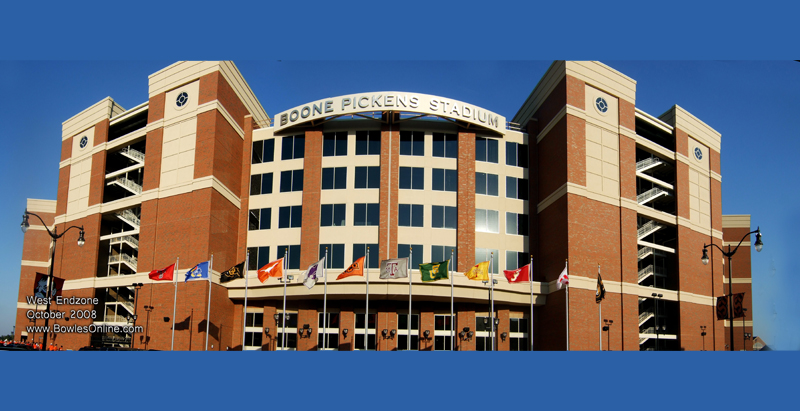Plumbing should always be looked at in the VE process, if for no other reason than there are a lot of units of pipe in a project. There are lots of places in a DWV system where value can be captured, but there are applications where what looks like value can mask risks that you might not want to take.
Because of financial realities, value engineering can often mean the difference between a project being shelved or a building being built. This creates tremendous pressure for VE practitioners to lower the first cost of any project. Often, this is a reasonable thing to do. The danger is that, when pushed too far, cost-cutting can add unacceptable risk, lower the value of the building and hide expenses in the total cost of ownership. That's what happened with the largest building project in recent NCAA history, the T. Boone Pickens Stadium at Oklahoma State University.
The Facts
In 2011, two years after the Stadium opened, a break in a plastic drain pipe was found. An inspection of the rest of the system revealed 15 other breaks. The football team was forced to abandon the facility for five months while contractors jackhammered thorough concrete floors to fix the problems.
Litigation was eventually settled in February 2015, for $700,000. The biggest portion of the settlement ($400,000) was paid by the firm that did the architectural, engineering and design work. The manufacturer of the water heaters used in the renovations, agreed to pay $125,000 of the settlement. This suggests that the maximum working temperature of PVC was exceeded, leading to collapse and failure. Unfortunately, this avoidable mistake is more common than it should be.
The Take-Aways
PVC can be used successfully below ground, but it requires careful installation and soil prep per ASTM D2321. Further, if its maximum working temperature will be exceeded, it can't be used. PVC is only a value when it doesn't fail. To make value engineering DWV systems easier to understand, we have prepared a downloadable brochure and handy checklist.

At Charlotte Pipe, we make both PVC and Cast Iron pipe. We are proud of the products that we make with both materials, but it doesn't do anybody any good when a fine material is used in the wrong application. If you have any questions about value engineering DWV systems -- even if you aren't using our pipe -- please call Charlotte’s Technical Services Department at 800-438-6091.
Related Stories
| Aug 11, 2010
Halsey Taylor introduces 14-gauge, vandal-resistant water coolers
Adding to its extensive collection of high-quality, durable drinking fountains and water coolers, Halsey Taylor introduces the new 14 Gauge Vandal-resistant Water Cooler. Available in both single and bi-level models (HVR8HD, HVR8HD-BL), this new water cooler line is ideal for any high-traffic application, especially those prone to tampering or misuse, such as schools, recreation centers and correctional facilities.
| Aug 11, 2010
EwingCole to merge with healthcare specialist Robert D. Lynn Associates
EwingCole, a nationally recognized architectural, engineering, interior design, and planning firm with more than 320 professionals, today announced that it will combine its practice with Robert D. Lynn Associates of Philadelphia, a 40-person firm with a robust portfolio of healthcare projects. The combination will create the Delaware Valley¹s largest and most comprehensive firm with an emphasis on healthcare architecture, and a national scope and presence.
| Aug 11, 2010
Jacobs, Arup, AECOM top BD+C's ranking of the nation's 75 largest international design firms
A ranking of the Top 75 International Design Firms based on Building Design+Construction's 2009 Giants 300 survey. For more Giants 300 rankings, visit http://www.BDCnetwork.com/Giants
| Aug 11, 2010
BIM adoption rate exceeds 80% among nation’s largest AEC firms
The nation’s largest architecture, engineering, and construction companies are on the BIM bandwagon in a big way, according to Building Design+Construction’s premier Top 170 BIM Adopters ranking, published as part of the 2009 Giants 300 survey. Of the 320 AEC firms that participated in Giants survey, 83% report having at least one BIM seat license in house, and nearly a quarter (23%) have 100-plus seats.
| Aug 11, 2010
RTKL names Lance Josal president and CEO
Lance K. Josal FAIA has been named President and CEO of RTKL Associates Inc., the international planning, design and engineering firm. Josal succeeds RTKL’s current President and CEO, David C. Hudson AIA, who is retiring from the firm. The changes will take effect on 1 September 2009.
| Aug 11, 2010
CHPS debuts high-performance building products database
The Collaborative for High Performance Schools (CHPS) made a new tool available to product manufacturers to help customers identify building products that contribute to sustainable, healthy, built environments. The tool is an online, searchable database where manufacturers can list products that have met certain environmental or health standards ranging from recycled content to materials that contribute to improved indoor air quality.
| Aug 11, 2010
HDR, Perkins+Will top BD+C's ranking of the nation's 100 largest healthcare design firms
A ranking of the Top 100 Healthcare Design Firms based on Building Design+Construction's 2009 Giants 300 survey. For more Giants 300 rankings, visit http://www.BDCnetwork.com/Giants







